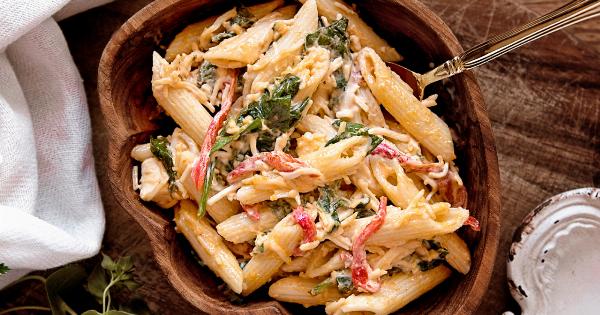For individuals with diabetes, indulging in sweets can be a challenging feat. The abundance of sugar in desserts can wreak havoc on blood sugar levels, making it vital for those with diabetes to carefully monitor their intake.
However, this does not mean that people with diabetes have to completely avoid sweets altogether. With careful planning, moderation, and a good understanding of how different sweets impact blood sugar, it is possible to enjoy treats while keeping diabetes under control.
The Role of Carbohydrates in Diabetes
When it comes to diabetes management, carbohydrates play a crucial role. Carbohydrates directly affect blood sugar levels and can cause a sudden spike in glucose levels.
Sweets, such as cakes, cookies, and ice cream, are typically high in carbohydrates and can quickly elevate blood sugar levels. Therefore, it is essential for individuals with diabetes to be mindful of their carbohydrate intake and choose their sweets wisely.
Understanding Glycemic Index
The glycemic index (GI) is a measure of how quickly a food raises blood sugar levels. Foods with a high GI, like refined sugar and white bread, cause a rapid spike in blood sugar.
On the other hand, foods with a low GI, such as whole grains and fruits, cause a slower and more gradual rise in blood sugar levels. When enjoying sweets, opt for those with a lower GI to minimize the impact on blood sugar.
Smart Swaps: Healthier Sugar Alternatives
Instead of traditional sugar, individuals with diabetes can explore alternative sweeteners that have a lower impact on blood sugar levels. Some popular options include:.
1. Stevia: Stevia is a natural sweetener that comes from the leaves of the Stevia rebaudiana plant. It is calorie-free and does not raise blood sugar levels, making it an excellent choice for individuals with diabetes.
2. Erythritol: Erythritol is a sugar alcohol that has fewer calories than sugar and a minimal impact on blood sugar. It is commonly found in sugar-free products and is well-tolerated by most people.
3. Monk Fruit: Monk fruit, also known as Luo Han Guo, is a fruit native to Southeast Asia. It contains natural compounds called mogrosides that provide sweetness without impacting blood sugar levels.
4. Xylitol: Xylitol is another sugar alcohol that does not raise blood sugar levels significantly. However, it is important to note that excessive consumption of xylitol can have a laxative effect.
When using sugar alternatives, it is crucial to be mindful of portion sizes and to check labels for any potential hidden sources of carbohydrates.
Portion Control and Meal Planning
While incorporating sweets into a diabetes-friendly diet, portion control is of utmost importance. Even with alternative sweeteners, consuming large quantities can still result in a spike in blood sugar levels.
It is advisable to enjoy sweets as part of a balanced meal that includes protein, healthy fats, and fiber to slow down the absorption of carbohydrates.
Meal planning is an effective strategy to ensure a balanced intake of carbohydrates and avoid sudden spikes in blood sugar.
By spreading out carbohydrate consumption throughout the day, it becomes easier to include a small portion of sweets without causing significant fluctuations in glucose levels.
Reading Food Labels
When indulging in store-bought sweets, reading food labels becomes essential for individuals with diabetes.
Look for products that are labeled as “sugar-free” or “diabetic-friendly.” However, it is still necessary to examine the carbohydrate content on the nutrition label, as some sugar-free products may still contain significant amounts of carbohydrates.
Pay attention to serving sizes and calculate the total carbohydrate intake accordingly. Be cautious of hidden sources of sugar in food products, such as syrups, agave nectar, or honey.
These can significantly impact blood sugar levels and should be accounted for when planning to include sweets in your diet.
Exercise and Blood Sugar Management
Physical activity plays a crucial role in blood sugar management. Regular exercise can help improve insulin sensitivity and lower blood sugar levels.
If you plan to enjoy sweets, engaging in physical activity before or after consumption can help mitigate the impact on blood sugar levels. Consult with a healthcare professional to determine the appropriate exercise routine for your specific needs.
Seeking Support and Professional Guidance
Managing diabetes can be overwhelming at times, especially when it comes to incorporating sweets into a balanced diet. Seeking support from healthcare professionals, diabetes educators, and support groups can provide valuable guidance and assistance.
They can help create personalized meal plans, offer advice on sweet choices, and provide motivation to stay on track.
Conclusion
Living with diabetes does not mean completely depriving oneself of the pleasure of enjoying sweets.
With careful planning, portion control, and consideration of alternative sweeteners, individuals with diabetes can fit small portions of desserts into their diet. Understanding the impact of different sweets on blood sugar levels and making informed choices can help strike a balance between indulgence and diabetes management.





























